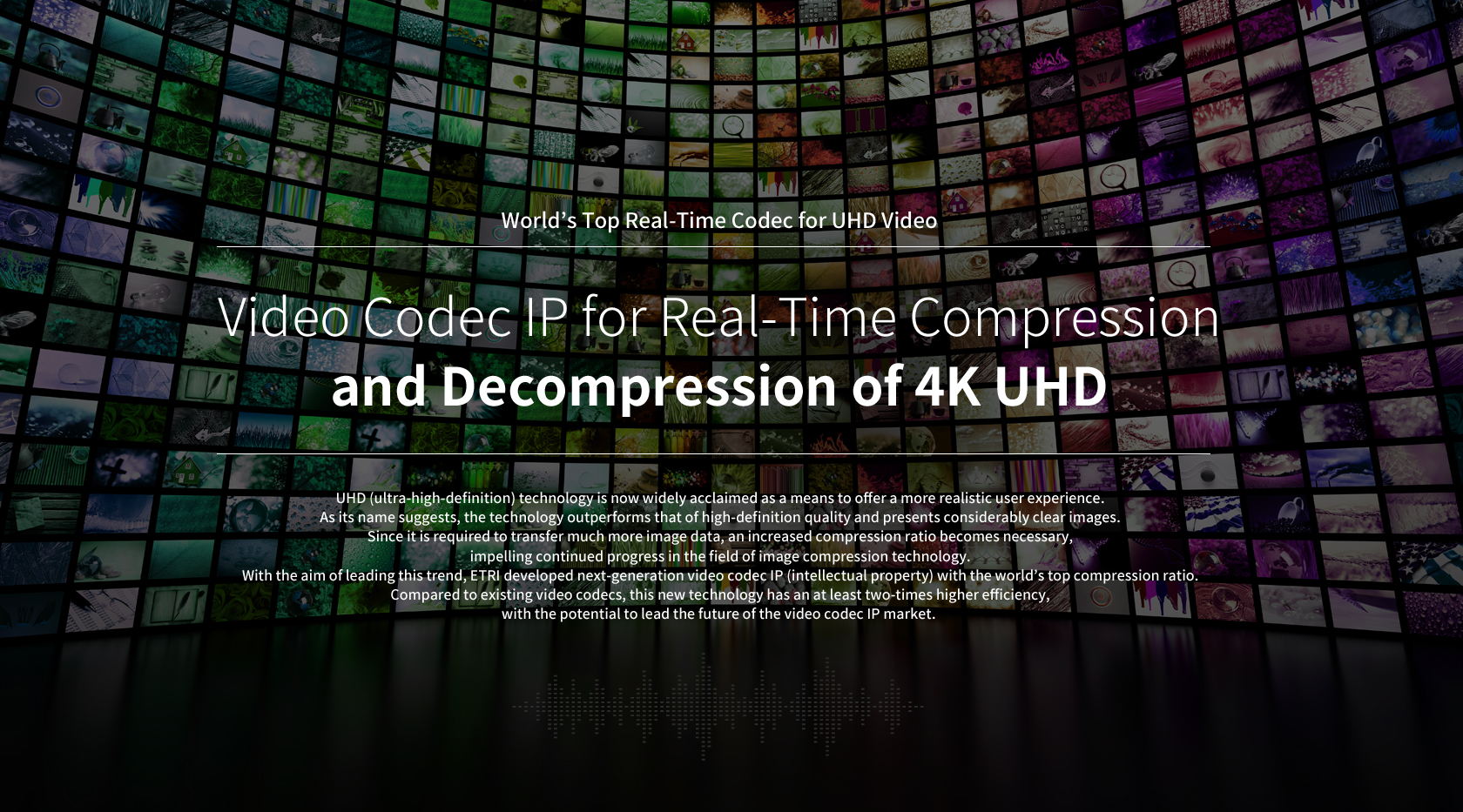
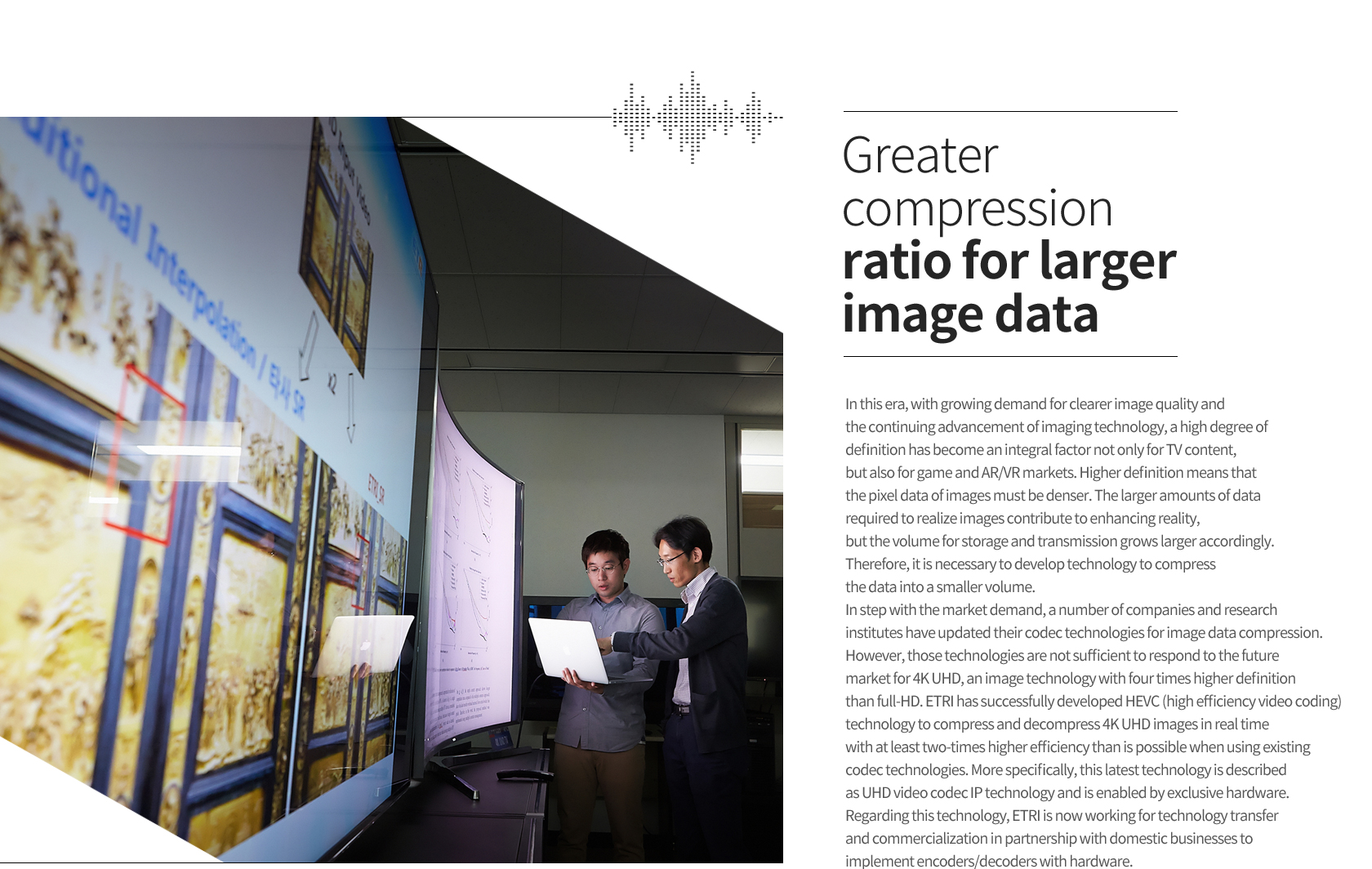
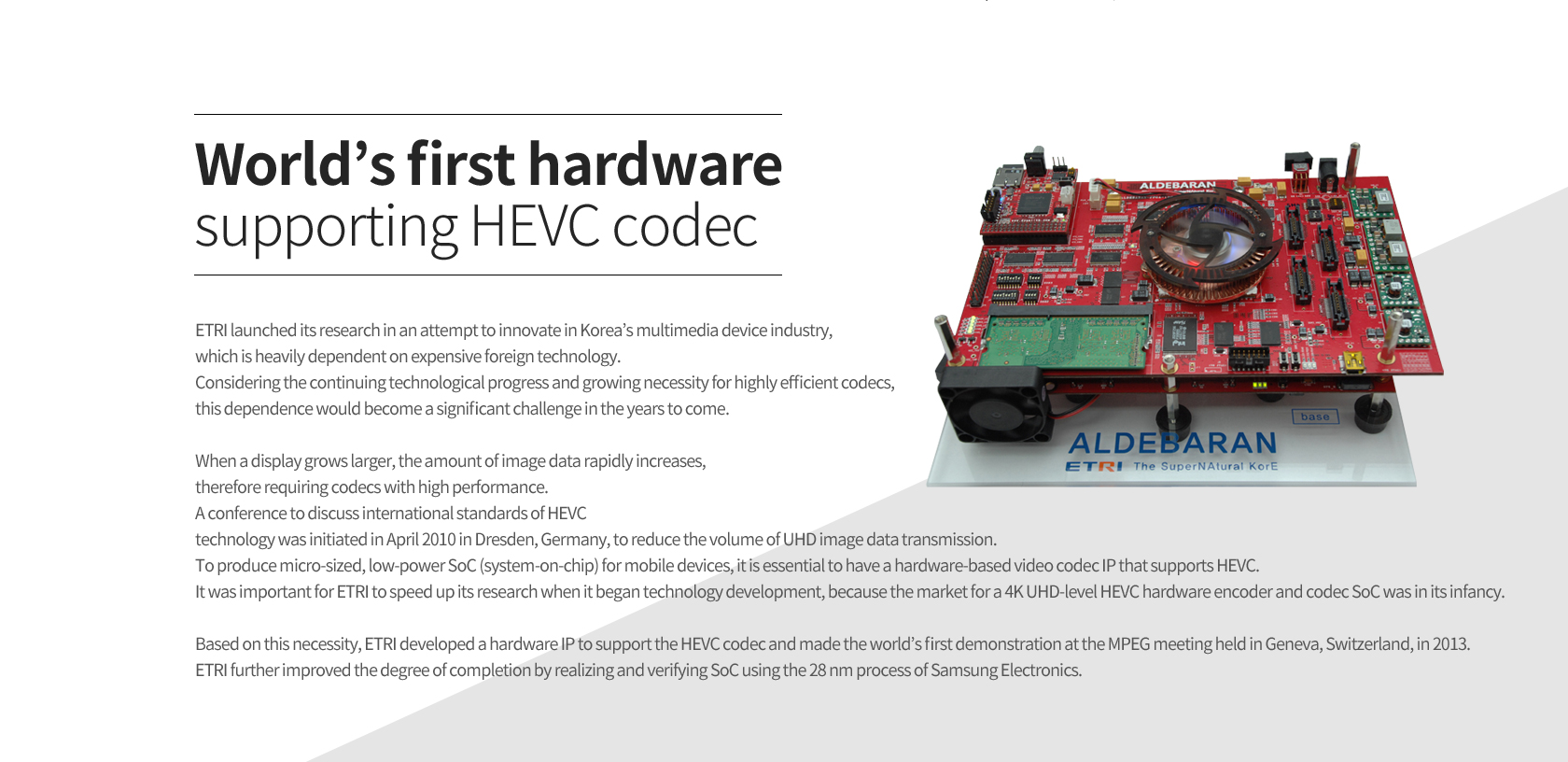

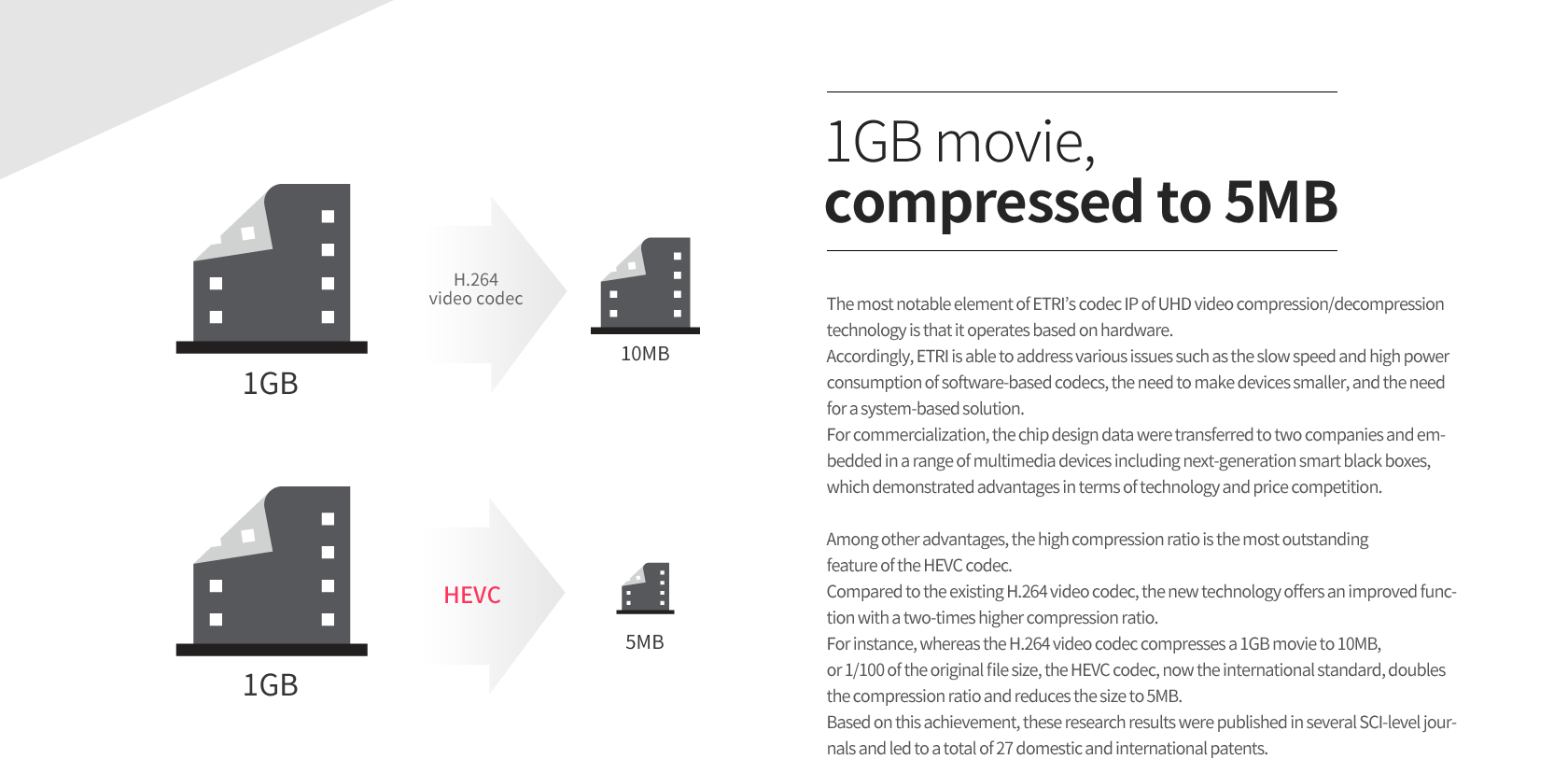
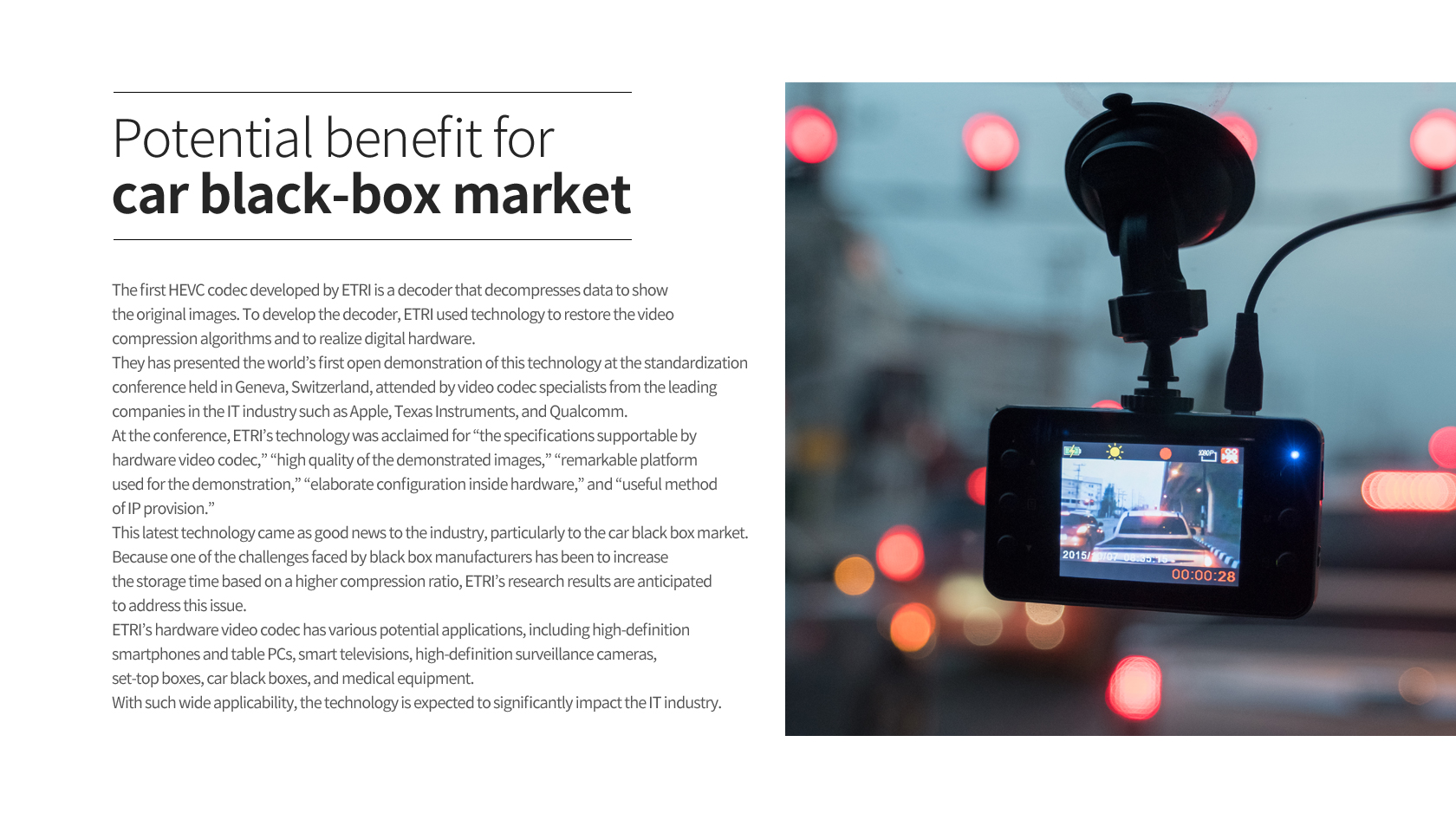

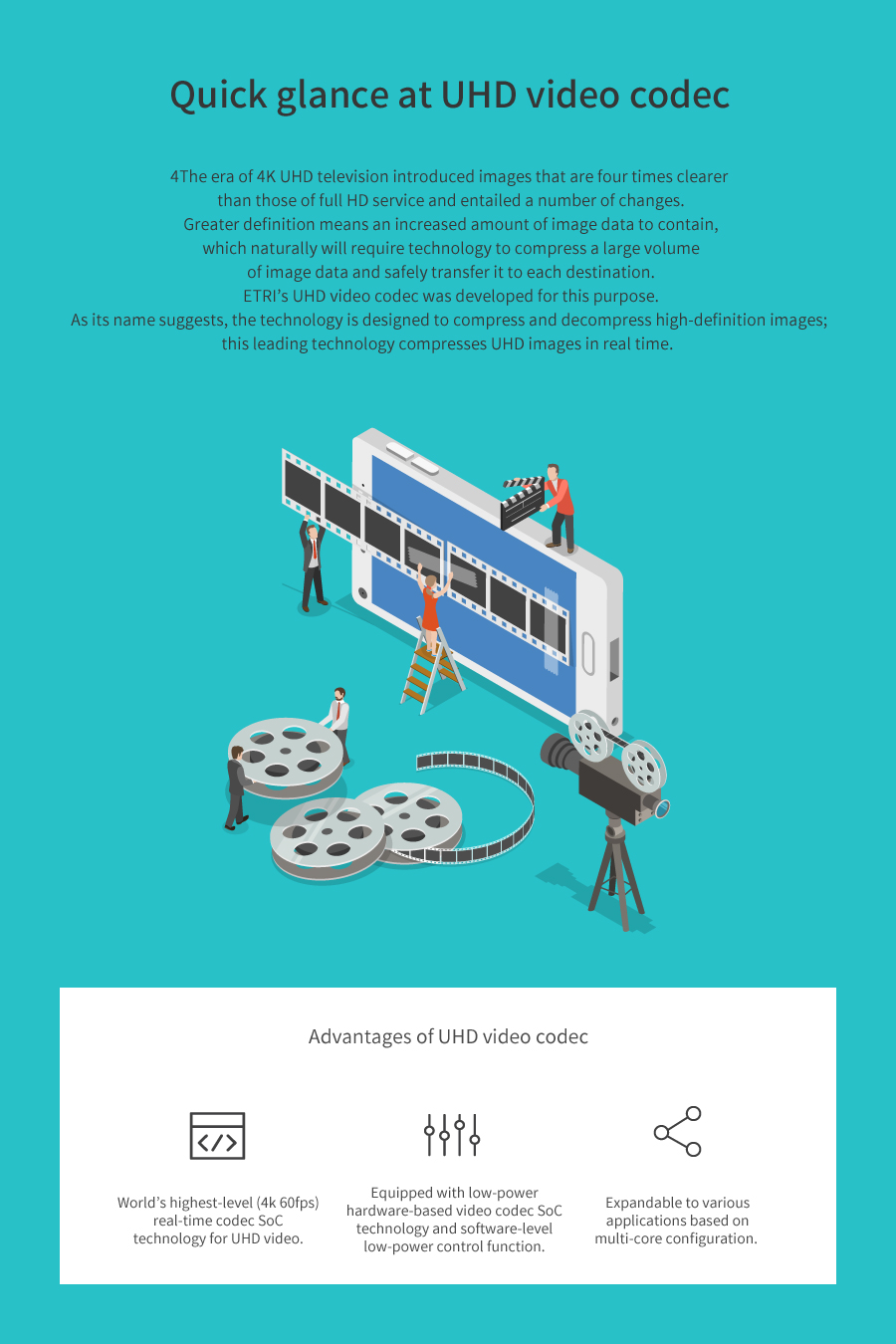
Video Codec IP for
Real-Time Compression
and Decompression
of 4K UHD
World’s Top Real-Time Codec for UHD Video
UHD (ultra-high-definition) technology is now widely acclaimed as a means to offer a more realistic user experience. As its name suggests, the technology outperforms that of high-definition quality and presents considerably clear images. Since it is required to transfer much more image data, an increased compression ratio becomes necessary, impelling continued progress in the field of image compression technology. With the aim of leading this trend, ETRI developed next-generation video codec IP (intellectual property) with the world’s top compression ratio. Compared to existing video codecs, this new technology has an at least two-times higher efficiency, with the potential to lead the future of the video codec IP market.

Greater compression
ratio for larger image data
In this era, with growing demand for clearer image quality and the continuing advancement of imaging technology, a high degree of definition has become an integral factor not only for TV content, but also for game and AR/VR markets. Higher definition means that the pixel data of images must be denser. The larger amounts of data required to realize images contribute to enhancing reality, but the volume for storage and transmission grows larger accordingly. Therefore, it is necessary to develop technology to compress the data into a smaller volume.
In step with the market demand, a number of companies and research institutes have updated their codec technologies for image data compression. However, those technologies are not sufficient to respond to the future market for 4K UHD, an image technology with four times higher definition than full-HD. ETRI has successfully developed HEVC (high efficiency video coding) technology to compress and decompress 4K UHD images in real time with at least two-times higher efficiency than is possible when using existing codec technologies. More specifically, this latest technology is described as UHD video codec IP technology and is enabled by exclusive hardware. Regarding this technology, ETRI is now working for technology transfer and commercialization in partnership with domestic businesses to implement encoders/decoders with hardware.

World’s first hardware supporting HEVC codec
ETRI launched its research in an attempt to innovate in Korea’s multimedia device industry, which is heavily dependent on expensive foreign technology. Considering the continuing technological progress and growing necessity for highly efficient codecs, this dependence would become a significant challenge in the years to come.
When a display grows larger, the amount of image data rapidly increases, therefore requiring codecs with high performance. A conference to discuss international standards of HEVC technology was initiated in April 2010 in Dresden, Germany, to reduce the volume of UHD image data transmission. To produce micro-sized, low-power SoC (system-on-chip) for mobile devices, it is essential to have a hardware-based video codec IP that supports HEVC. It was important for ETRI to speed up its research when it began technology development, because the market for a 4K UHD-level HEVC hardware encoder and codec SoC was in its infancy.
Based on this necessity, ETRI developed a hardware IP to support the HEVC codec and made the world’s first demonstration at the MPEG meeting held in Geneva, Switzerland, in 2013. ETRI further improved the degree of completion by realizing and verifying SoC using the 28 nm process of Samsung Electronics.
1GB movie
compressed to 5MB
The most notable element of ETRI’s codec IP of UHD video compression/decompression technology is that it operates based on hardware. Accordingly, ETRI is able to address various issues such as the slow speed and high power consumption of software-based codecs, the need to make devices smaller, and the need for a system-based solution. For commercialization, the chip design data were transferred to two companies and embedded in a range of multimedia devices including next-generation smart black boxes, which demonstrated advantages in terms of technology and price competition.
Among other advantages, the high compression ratio is the most outstanding feature of the HEVC codec. Compared to the existing H.264 video codec, the new technology offers an improved function with a two-times higher compression ratio. For instance, whereas the H.264 video codec compresses a 1GB movie to 10MB, or 1/100 of the original file size, the HEVC codec, now the international standard, doubles the compression ratio and reduces the size to 5MB. Based on this achievement, these research results were published in several SCI-level journals and led to a total of 27 domestic and international patents.

Potential benefit for
car black-box market
The first HEVC codec developed by ETRI is a decoder that decompresses data to show the original images. To develop the decoder, ETRI used technology to restore the video compression algorithms and to realize digital hardware. They has presented the world’s first open demonstration of this technology at the standardization conference held in Geneva, Switzerland, attended by video codec specialists from the leading companies in the IT industry such as Apple, Texas Instruments, and Qualcomm. At the conference, ETRI’s technology was acclaimed for “the specifications supportable by hardware video codec,” “high quality of the demonstrated images,” “remarkable platform used for the demonstration,” “elaborate configuration inside hardware,” and “useful method of IP provision.”
This latest technology came as good news to the industry, particularly to the car black box market. Because one of the challenges faced by black box manufacturers has been to increase the storage time based on a higher compression ratio, ETRI’s research results are anticipated to address this issue.
ETRI’s hardware video codec has various potential applications, including high-definition smartphones and table PCs, smart televisions, high-definition surveillance cameras, set-top boxes, car black boxes, and medical equipment. With such wide applicability, the technology is expected to significantly impact the IT industry.



